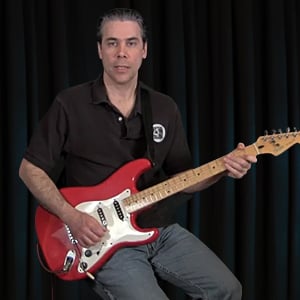Christopher Schlegel's Guitar Lessons

Christopher has loved music from a very young age. At the age of 5 he
built a makeshift podium so he could pretend to conduct to Tchaikovsky.
At 6 he was making guitars out of yardsticks, rubber bands, shoeboxes,
and twine and pretending to play along with Beatles and Disney cartoon
movie songs.
50 years later, after learning and playing a variety of music from Van
Halen, to Duke Ellington, to Beethoven, in rock, blues, jazz and
classical styles, achieving a BA in Music with emphasis in Applied
Guitar, he is still at it, composing music and teaching. His encyclopedic
knowledge of music and the guitar makes him an essential guide and mentor
on the Guitar Tricks forum and as a teacher in our tutorials!
Sort By
Loading Tutorials...
Loading Tutorials...